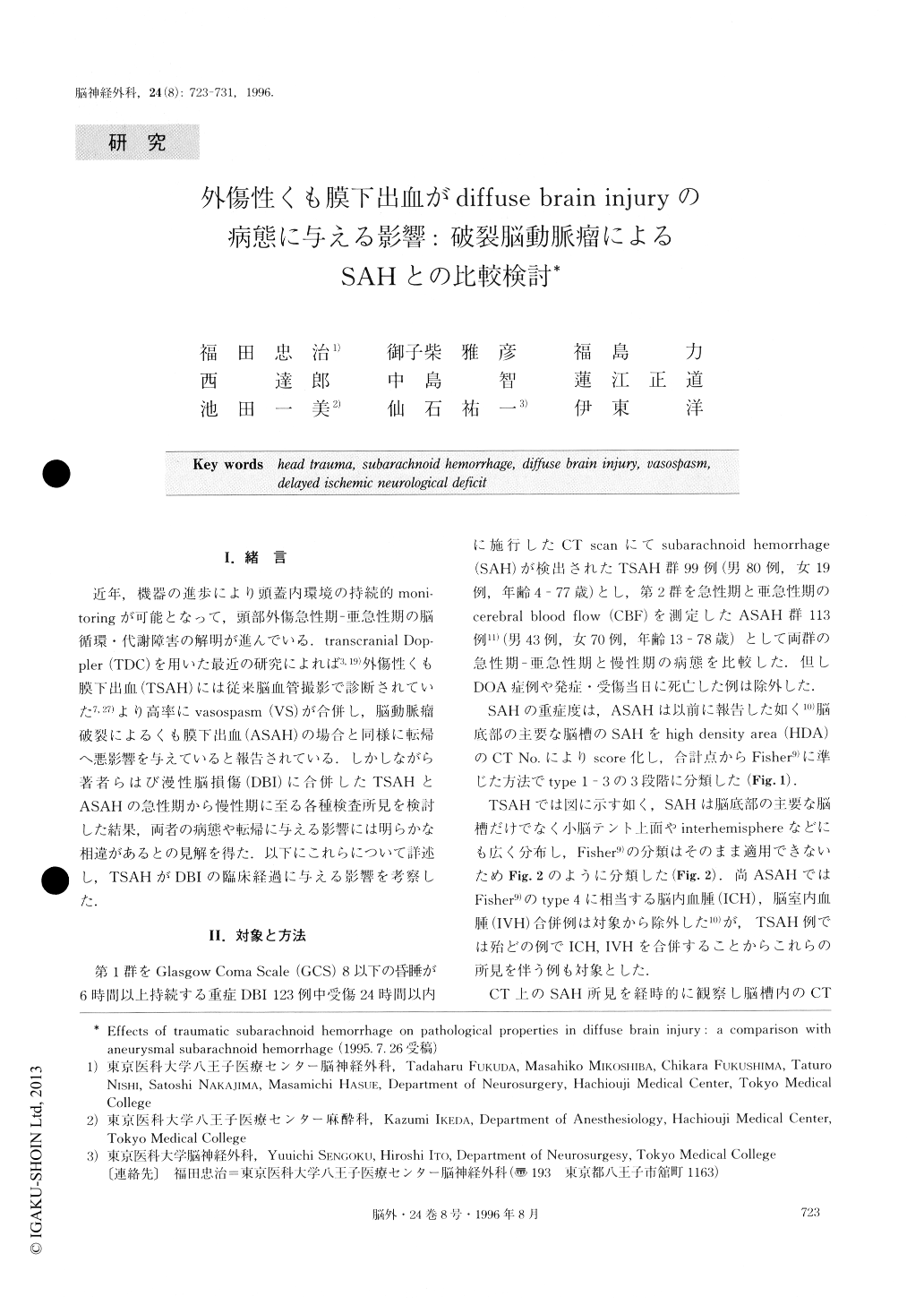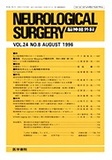Japanese
English
- 有料閲覧
- Abstract 文献概要
- 1ページ目 Look Inside
I.緒言
近年,機器の進歩により頭蓋内環境の持続的moni—toringが可能となって,頭部外傷急性期一亜急性期の脳循環・代謝障害の解明が進んでいる.transcranial Dop—pler(TDC)を用いた最近の研究によれば3,19)外傷性くも膜下出血(TSAH)には従来脳血管撮影で診断されていた7,27)より高率にvasospasm(VS)が合併し,脳動脈瘤破裂によるくも膜下出血(ASAH)の場合と同様に転帰へ悪影響を与えていると報告されている.しかしながら著者らはび漫性脳損傷(DBI)に合併したTSAHとASAHの急性期から慢性期に至る各種検査所見を検討した結果,両者の病態や転帰に与える影響には明らかな相違があるとの見解を得た.以下にこれらについて詳述し,TSAHがDBIの臨床経過に与える影響を考察した.
As a result of recent advances in continuous monitor-ing equipment, it has been reported that vasospasm (VS) and delayed ischemic neurological deficit (DIND) occur as frequently in traumatic subarachnoid hemor-rhage (TSAH) as in subarachnoid hemorrhage due to ruptured intracranial aneurysm (ASAH), and these VS and DIND have been reported to affect the outcome of TSAH adversely in many cases.
When we compared TSAH secondary to diffuse brain injury (DBI) with ASAH, however, these two conditions were evidently different from each other in nature. Then we compared laboratory data, clinical course, and outcomes of TSAH associated with DBI with those of ASAH, to determine whether TSAH re-sults in poor outcomes of DBI. On CT scans, patterns of SAH distribution were different from each other, and SAH was detected in 76% of the patients with ASAH on day 4, whereas only 2.0% of the patients with TSAH had detectable SAH on day 3. The inci-dence rates of detectable SAH in both groups remained significantly different from each other after day 2. The cerebral blood flow (CBF) decreased to around 75% of the normal flow in the acute stage of ASAH, and it de-creased further to around 65% in the subacute stage. In TSAH, in contrast, CBF varied widely among the pa-tients. The average CBF decreased to about 70% in the acute stage, and then it increased to around the lowerlimit of the normal range in the subacute stage. The urinary output and serum concentration of low molecu-lar protein compositions in TSAH were markedly differ-ent from those in ASAH. In addition, the contour of a low density area (LDA) in CT scans in the subacute-chronic stage was the same as that of the area supplied by the artery being constricted due to cerebro-vascular spasm in ASAH. In TSAH, in contrast, hardly any LDA had a form that was suggestive of this conjunc-tion, with cerebro-vascular spasm and the incidence rate of LDAs was significantly different from that for ASAH. About 30% of the patients with ASAH had ventricular enlargement, which was diagnosed as nor-mal pressure hydrocephalus by cisternography, in the chronic stage. Surgical shunting was effective for these patients. In TSAH, ventricular enlargement was observed in more than 50% of the patients, but almost none of these patients underwent surgical shunting, be-cause it resulted from cerebral atrophy. Regardless of causes of SAH, the severer SAH was, the more often patients had a poor outcome. The outcome of TSAH was, however, significantly poorer than that of ASAH. When SAH was traumatic, it disappeared by the time VS developed and, in addition, changes in CBF and the form and incidence rate of LDAs were different from those in ASAH.
We concluded that, although TSAH is an adverse prognostic factor for DBI, it does not contribute to poor outcomes of DBI by giving rise to DIND caused by VS.

Copyright © 1996, Igaku-Shoin Ltd. All rights reserved.


